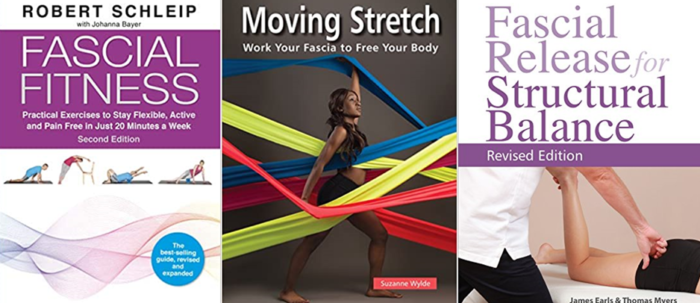
Feeling your way with fascia!
Upgrade your practice with the top three books from industry leaders Robert Schleip, James Earls, Thomas Myers and Suzanne Wylde
The physical therapy world has been buzzing about fascia for years but with recent advances in our scientific understanding making it in to the wider news, the word ‘fascia’ is rapidly becoming a part of common vernacular. Whether you’re a massage therapist, reflexologist, personal trainer or yoga teacher you’ll no doubt have clients coming to you keen to understand how they can benefit from integrating fascial work in to their programmes. How up-to-date are your knowledge and skills?
If you’d like to brush up on current research and how treatment approaches are evolving, we’ve sifted through the most up-to-date textbooks and selected what we believe are three of the best!
1. Fascial Fitness: Practical Exercises to Stay Flexible, Active and Pain Free in Just 20 Minutes a Week (Robert Schleip) (£14.49, Amazon)
Robert Schleip is a titan of the fascial world. This newly updated edition of his classic ‘Fascial Fitness’ presents findings from recent fascial research alongside the methods and equipment he considers most beneficial for fascial health (as well as those which do more harm than good!). But arguably the most valuable part of the book is the practical exercises – exercises Schleip himself claims can improve pain, mobility, and general well-being with only 10 minutes, twice a week. With client compliance to self-care routines often being an obstacle to well-being goals, these exercises are easy-wins that can give your toolbox a really valuable boost.
2. Moving Stretch: Work your Fascia to Free Your Body (Suzanne Wylde) (£11.16, Amazon)
In this wonderfully lively book Suzanne Wylde shares fascial stretching techniques geared specifically towards ‘feeling taller and more upright, youthful and energised’!
Moving Stretch uses the body’s own natural resistance to release tension. And by keeping the tissues supple we can also reduce the effects of ageing – not just by moving better, but looking better, too. You can see the effects of these rejuvenating techniques as much as you can feel them. Adaptable for all ages and abilities – be it amateur or professional athletes, or anyone looking to reduce the stiffness and aches and pains of getting older – Suzanne demonstrates how simple it can be to adapt your stretching routine to specifically work the fascia. Whether you’re looking for whole-body stretches or routines for specific goals such as improving posture, countering the effects of sedentary office work, or improving back health, you’ll find plenty of gems in this book. And the message again here is that it need only 10 minutes to feel better for the rest of the day. It’s a compelling and inspiring read; you’ve only got to look at Suzanne herself to see the benefits of her approach!
Fascial Release for Structural Balance (James Earls and Thomas Myers) (£17.34, Amazon)
“Fascial release has never been made more understandable and achievable – a well-illustrated and excellent read” – Leon Chaitow
Many of you will already own a copy of Thomas Myers’ internationally acclaimed Anatomy Trains, or at least be familiar with the ‘blue men’ pictures that illustrate his theory of myofascial slings of movement. If you’d like more guidance on how to apply the anatomy trains concepts, then this book is for you. Written for physical therapy practitioners of any discipline, Earls and Myers interpret the latest research on fascia and present an extensive library of techniques designed to restore structure and function in the body. They explain why working with fascial restrictions requires a different eye and touch, and take you through their own processes for bodyreading and postural analysis with clear explanations and over 150 colour photographs. These are strategic, research-based techniques that Earls and Myers claim can eliminate chronic pain and movement dysfunction – for good.